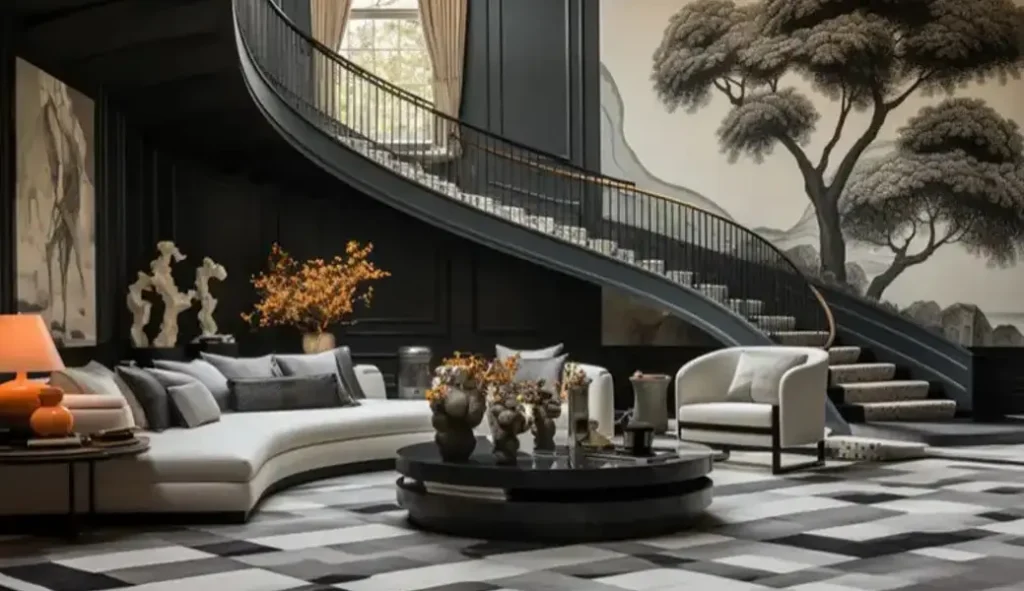Key Takeaways
- Luxury design integrates superior quality materials and meticulous attention to detail.
- Understanding the psychological impact of luxury helps create spaces that inspire and comfort.
- Balance is crucial—luxury spaces should be both aesthetically pleasing and functional.
- Future trends in luxury design emphasize sustainability and technological enhancements.
Introduction to Luxury Design
Luxurious design creates an immersive experience that stimulates the senses and uplifts the soul, going beyond just architectural beauty. This notion is paramount for a luxury homes builder, where spaces are crafted to reflect personal success and bespoke elegance. However, the essence of luxury isn’t only grandeur—it lies in the subtle nuances that compose an overall sense of harmony and allure.
Creating luxurious spaces isn’t about filling rooms with expensive items but designing a serene yet opulent environment. It requires a profound understanding of materials, space utilization, and human psychology. These components evoke exclusivity and indulgence while inspiring those in such environments. Crafting these environments involves blending art with science, ensuring that every design decision contributes to an overall narrative of sophistication and emotional engagement.
Critical Elements of Luxury Spaces
Elements integral to luxury design include high-quality materials, thoughtful spatial planning, and an unwavering attention to detail. Rare woods, exquisite textiles, and unique art pieces can elevate a space to elegance and sophistication. Each component, from the floor plan to the tiniest decorative element, is chosen precisely to enhance the living experience.
According to experts, incorporating customized furnishings that align with personal tastes further enhances a room’s uniqueness. This painstaking process guarantees that each area of a luxurious home seems specially designed, creating a smooth fusion of practicality and visual appeal. Custom design solutions provide uniqueness and a personal touch that resonates with one’s identity, making the space one’s own.
The Psychological Influence of Luxury
Luxury spaces are potent manifestations of personal achievement and social standing, offering relaxation, peace, and a sense of accomplishment. They provide intrinsic satisfaction and allow individuals to enjoy the fruits of their labor. Luxury design also impacts emotional well-being, facilitating a state of tranquility. These environments act as refuges from the world and sources of rejuvenation, enhancing mental clarity and emotional stability and contributing to an overall improved quality of life. The duality of earthly indulgence and mental repose makes luxury spaces transformative for those who inhabit them.
Designing for Inspiration and Comfort
An inspiring design should stimulate the senses and provide maximum comfort, fostering innovation and relaxation while promoting creativity. It involves curating environments that nurture innovation while remaining functional and accessible. Luxury homes can use bespoke installations like built-in libraries or art nooks as creative sanctuaries, boosting motivation and fostering a deeper connection with the living space. Design elements that encourage interaction with the environment can transform daily experiences, making homes more than just residing spaces but expressions of personal growth and inspiration.
Role of Colors and Materials
Color schemes and material choices influence luxury spaces. Rich hues like emerald greens and deep blues create depth, while natural materials like marble, wood, and ceramics add warmth and texture. A well-curated palette enhances aesthetics and emotional responses, making spaces feel inviting and coherent. The integration of colors and textures personalizes spaces, reflecting one’s identity. Designers can infuse a sense of calm, productivity, or captivation, aligning with each space’s intended use.
Finding the Balance
Luxury design aims to balance grandeur with livability, ensuring it doesn’t overwhelm the senses. It is achieved by integrating subtle design elements that enhance usability without compromising elegance. The goal is to create a space that feels like home, reflecting individualism without losing functionality. This balance ensures that luxury spaces cater to practical needs while providing an aesthetic uplift, allowing residents to enjoy comfort and style. Careful consideration of space, lighting, and livable design creates a harmonious environment.
Future Trends in Luxury Design
The future of luxury design is shifting towards integrating sustainability and technology, with eco-conscious choices and smart homes becoming the norm. These advancements enable efficient, environmentally friendly, customized homes, blending high aesthetics with environmental responsibility. This trend aims to make luxury synonymous with sustainable living, enriching residents’ experiences holistically. The blend of technology and design will continue to innovate, creating an ever-evolving canvas for luxury living.
Also read-Innovative Ways to Keep Your Home’s Exterior Sparkling Clean
